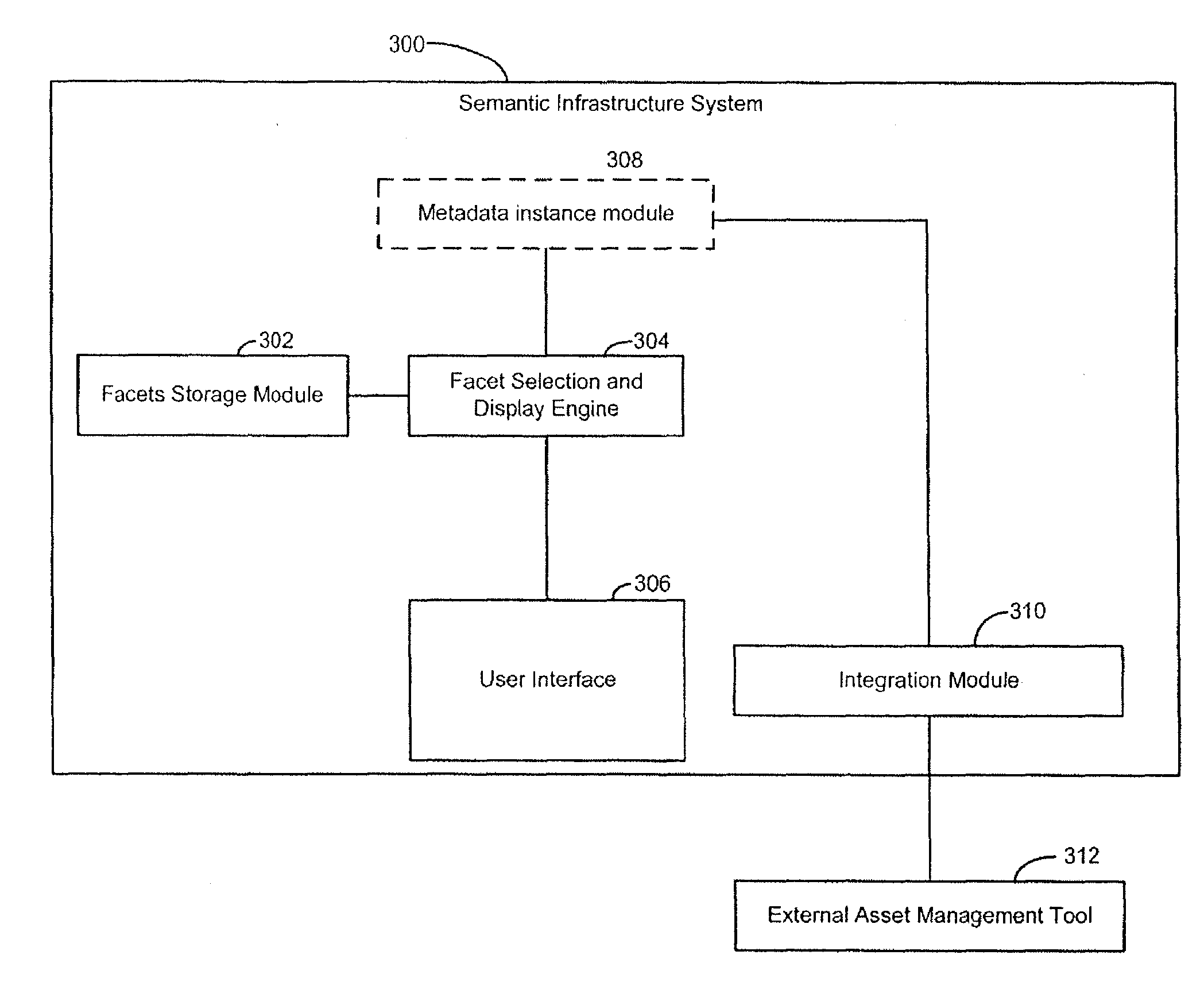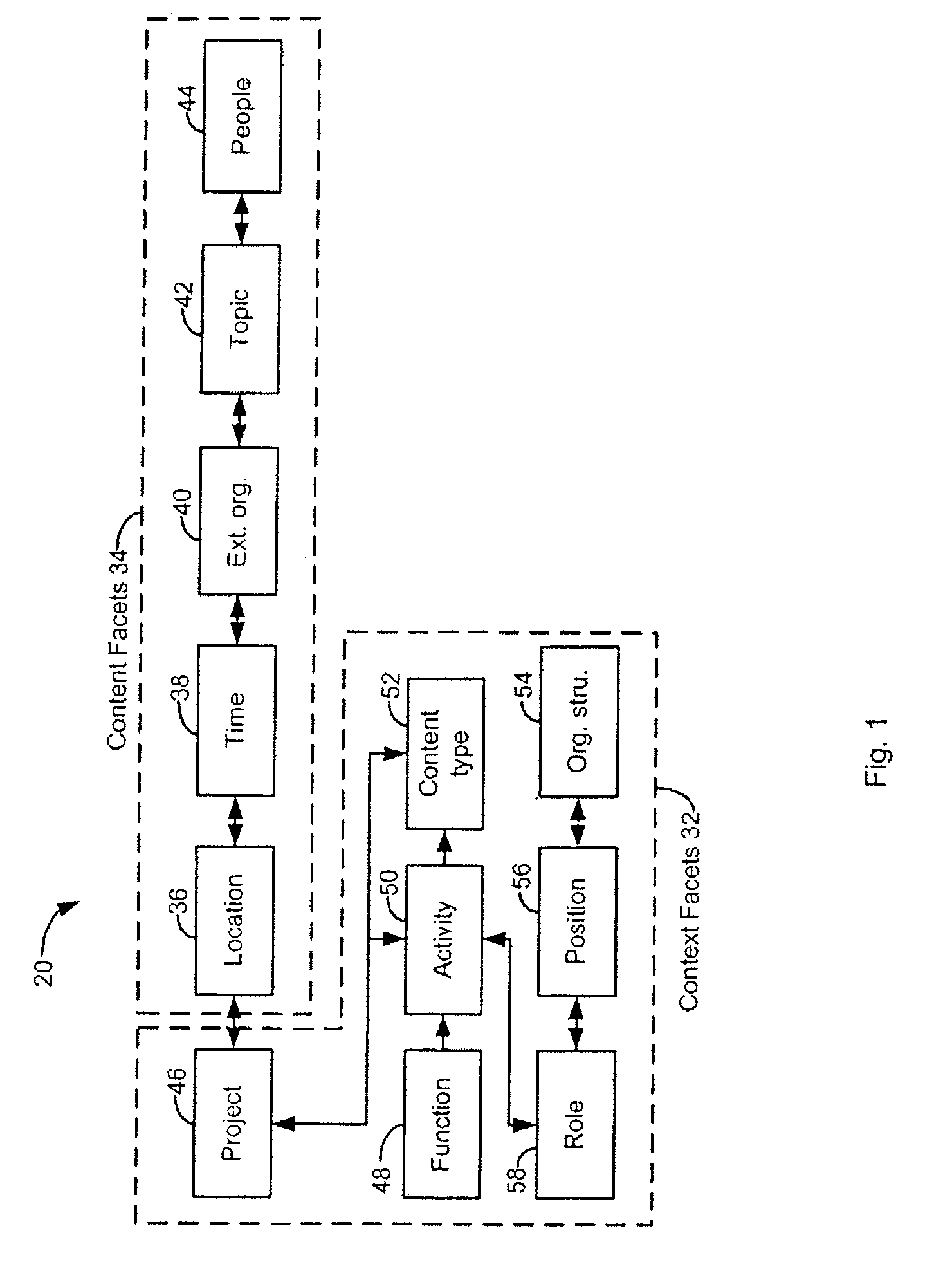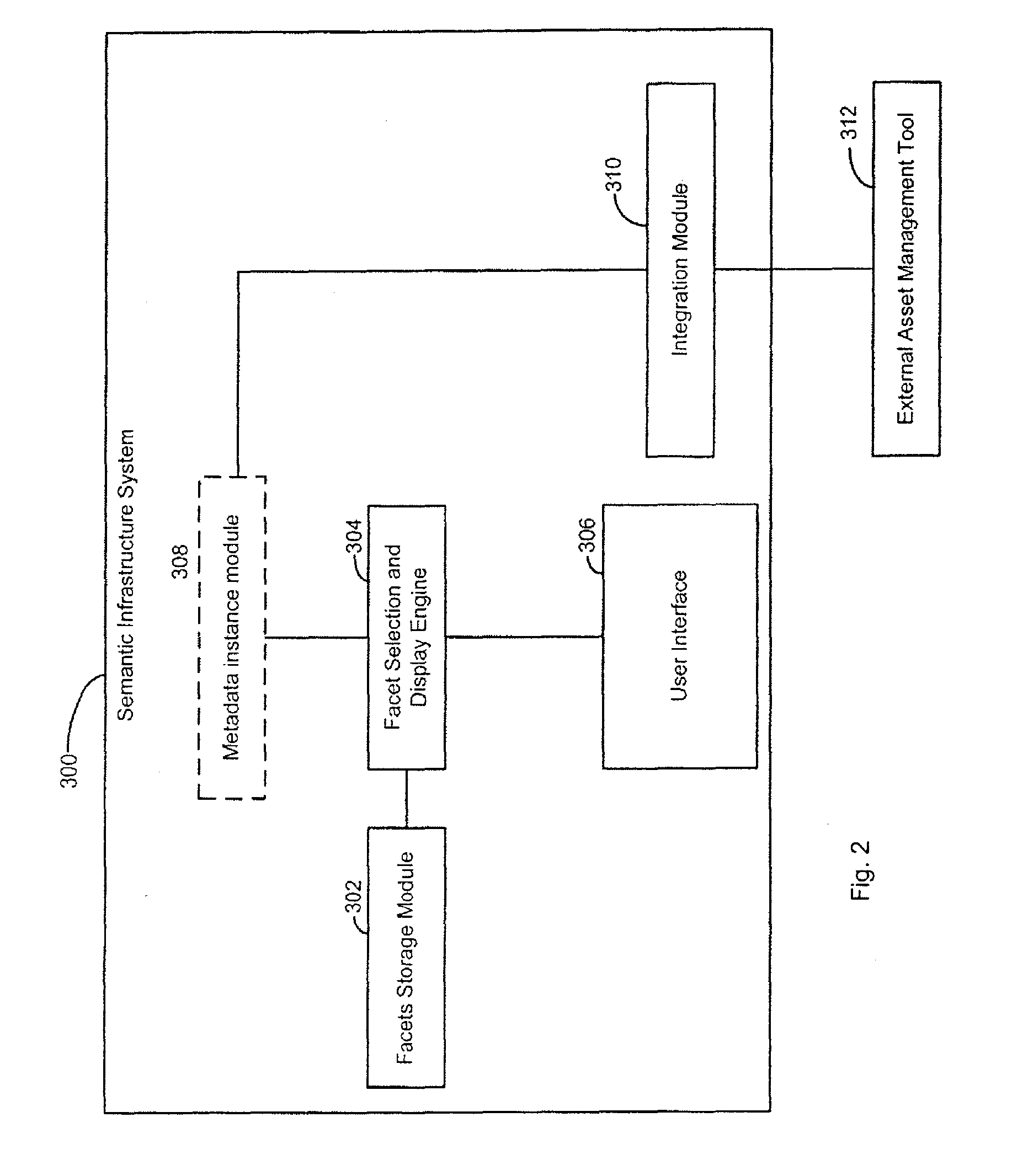Software for facet classification and information management
a software and information management technology, applied in the field of information management systems, can solve problems such as inability to access information, and inability to meet the needs of users, and achieve the effects of improving the quality of information, and improving the accuracy of information
- Summary
- Abstract
- Description
- Claims
- Application Information
AI Technical Summary
Benefits of technology
Problems solved by technology
Method used
Image
Examples
Embodiment Construction
[0032]Generally, the present invention provides a semantic infrastructure (SI) to interface with an information asset management tool, such as a document management system (also referred to as a content tool). The SI is a semantic layer that links together structured, unstructured and tacit information. The present invention links the content of documents to an enterprise view (facets: role-position-organization) and to a corporate file plan (facets: function and activity) The SI includes a database storing assets each associated with a plurality of facets. Typically, file classification, taxonomies, metadata, thesauri and data models (i.e., data structures required by a database) have each used their own independent databases to store data in various formats, with these databases not interacting with each other. Embodiments of the present invention provide a unified approach, i.e., an approach that provides all the above-noted functionalities, to better describe and organize inform...
PUM
 Login to View More
Login to View More Abstract
Description
Claims
Application Information
 Login to View More
Login to View More - R&D
- Intellectual Property
- Life Sciences
- Materials
- Tech Scout
- Unparalleled Data Quality
- Higher Quality Content
- 60% Fewer Hallucinations
Browse by: Latest US Patents, China's latest patents, Technical Efficacy Thesaurus, Application Domain, Technology Topic, Popular Technical Reports.
© 2025 PatSnap. All rights reserved.Legal|Privacy policy|Modern Slavery Act Transparency Statement|Sitemap|About US| Contact US: help@patsnap.com



